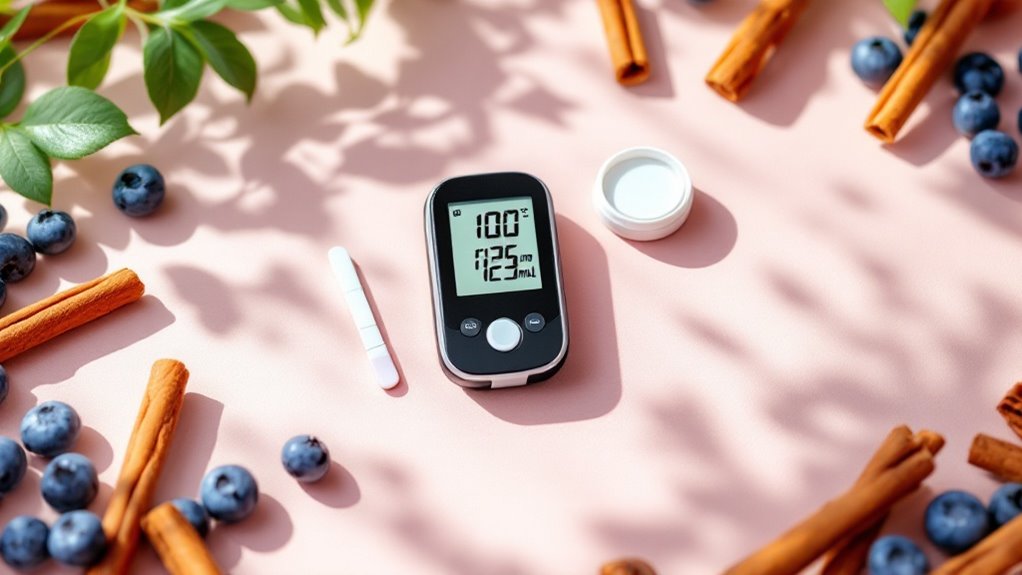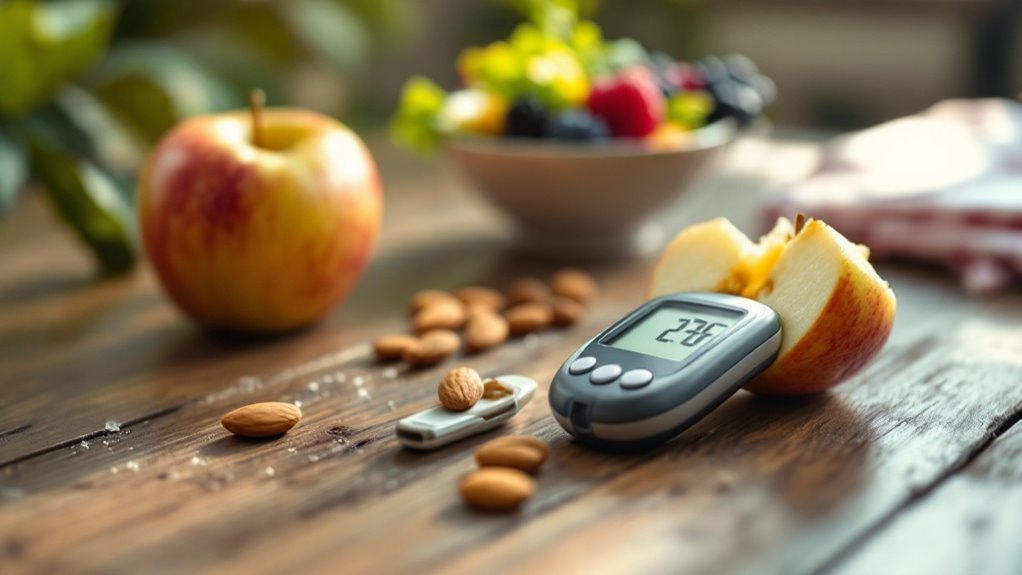Prediabetes sneaks up on women like a silent stalker, often disguised as everyday annoyances. The warning signs? Stubborn fatigue that won’t quit, sugar cravings that feel like addiction, and those weird dark patches on your neck aren’t just skin problems. About 98 million Americans have it, and most don’t know. Women face extra challenges with menstrual changes and recurring yeast infections. Getting tested beats playing Russian roulette with your health.

Why wait for symptoms when your body might already be waving red flags? Prediabetes is sneaky – it creeps up silently, often without obvious signs. But for women, this metabolic troublemaker has some distinctly feminine calling cards that shouldn’t be ignored.
Let’s get real about the numbers. If you’re over 45, overweight, or have a family history of diabetes, you’re already in the danger zone. And here’s the kicker: being a couch potato for most of the week isn’t doing you any favors. Those casual walks to the mailbox? Not enough. Your body needs more movement than that. With 98 million Americans having prediabetes, this isn’t a rare condition to brush off.
Face facts: being 45+, overweight, or having diabetes in your family puts you at risk. Quick mailbox walks won’t cut it anymore.
Women face unique challenges with prediabetes that men don’t have to deal with. Think recurring yeast infections that just won’t quit. Periods that suddenly become heavier and longer – because apparently, regular periods weren’t fun enough already.
And if you’re trying to conceive, prediabetes might be throwing a wrench in those plans, thanks to its knack for messing with hormones. A disrupted insulin production system makes it harder for your body to process glucose properly, leading to elevated blood sugar levels. Regular medical check-ups can catch these hormone imbalances before they become serious problems.
The warning signs are there, but they’re subtle. Feeling more tired than usual? Craving sugar like it’s going out of style? Your body might be struggling with insulin resistance. That dark, velvety skin appearing on your neck or under your arms isn’t a weird tan – it’s acanthosis nigricans, a classic prediabetes red flag.
Here’s the good news – prediabetes isn’t a one-way ticket to type 2 diabetes. Catching it early means you can flip the script. Regular blood sugar testing is vital – those numbers between 100 and 125 mg/dL on your fasting glucose test? That’s your wake-up call.
The fix isn’t complicated, but it requires commitment. Ditch the processed junk food. Get moving at least three times a week. And yes, that glass of wine you’re eyeing? Keep it to one.
Your body will thank you later. Because let’s face it – dealing with prediabetes now is way better than managing full-blown diabetes later.
Frequently Asked Questions
Can Prediabetes Symptoms Differ Between Women of Different Age Groups?
Yes, prediabetes symptoms vary considerably across age groups in women.
Younger women often deal with PCOS and menstrual irregularities.
Middle-aged women? They’re hit with menopause-related hormonal changes that mess with insulin sensitivity.
The older crowd faces tougher challenges – more severe insulin resistance and faster progression to type 2 diabetes.
Each age group gets its own special brand of trouble. Thanks, hormones.
Is There a Genetic Link Between PCOS and Prediabetes in Women?
Research shows a clear genetic connection between PCOS and prediabetes. Scientists have identified about 20 genes that link these conditions.
PCOS-related genes affect both hormone production and insulin sensitivity – a double whammy for blood sugar control. Talk about bad luck!
Family history plays a huge role too. If mom had PCOS with prediabetes, daughters face higher risks.
Genetics aren’t destiny, but they sure stack the deck.
How Often Should Women Get Tested for Prediabetes During Pregnancy?
Most women get tested between 24-28 weeks of pregnancy. Simple as that.
But here’s the kicker: if you’ve got risk factors like obesity or family history, testing starts right at your first prenatal visit.
And guess what? If that early test comes back normal, you’re not off the hook – you’ll still need that standard glucose test at 24 weeks.
High-risk moms might need multiple tests throughout pregnancy.
Do Birth Control Pills Increase the Risk of Developing Prediabetes?
Birth control pills can indeed raise prediabetes risk.
Research shows hormonal contraceptives mess with glucose metabolism and insulin sensitivity – not great news for blood sugar levels. The culprits? Estrogen and progestogen.
But here’s the deal: not all birth control is created equal. Progestin-only methods have less impact, and non-hormonal IUDs don’t affect glucose levels at all.
Individual responses vary wildly.
Can Menopause-Related Hormonal Changes Affect Prediabetes Development and Progression?
Menopause hits hard when it comes to blood sugar control.
The dramatic drop in estrogen wreaks havoc on insulin sensitivity, making cells increasingly stubborn about responding to insulin. This hormonal chaos can absolutely trigger prediabetes or make existing cases worse.
Weight gain around the middle – thanks, menopause! – doesn’t help either.
The body’s metabolic changes during this time create perfect conditions for blood sugar problems.









